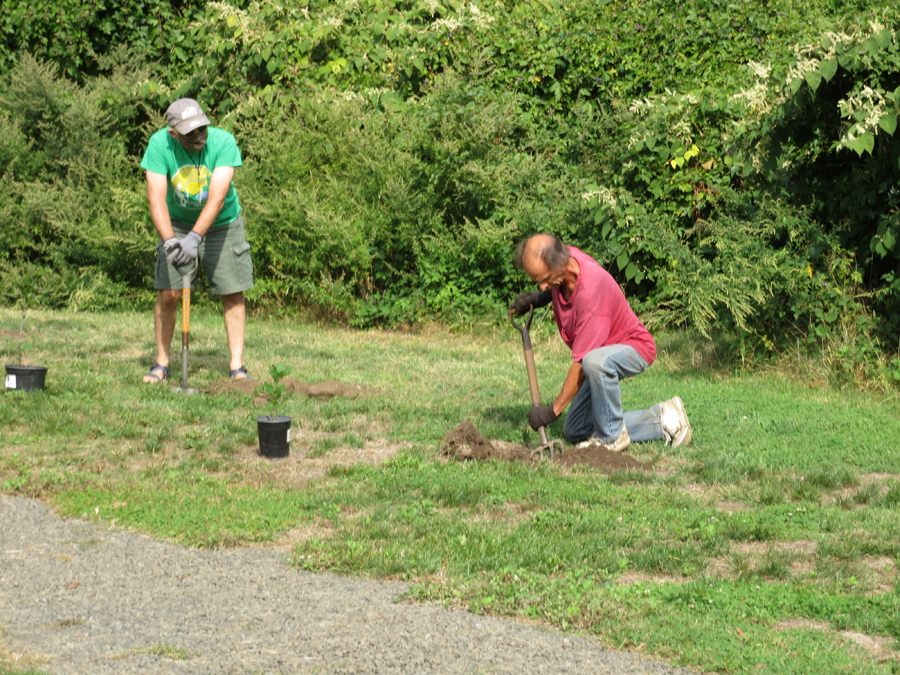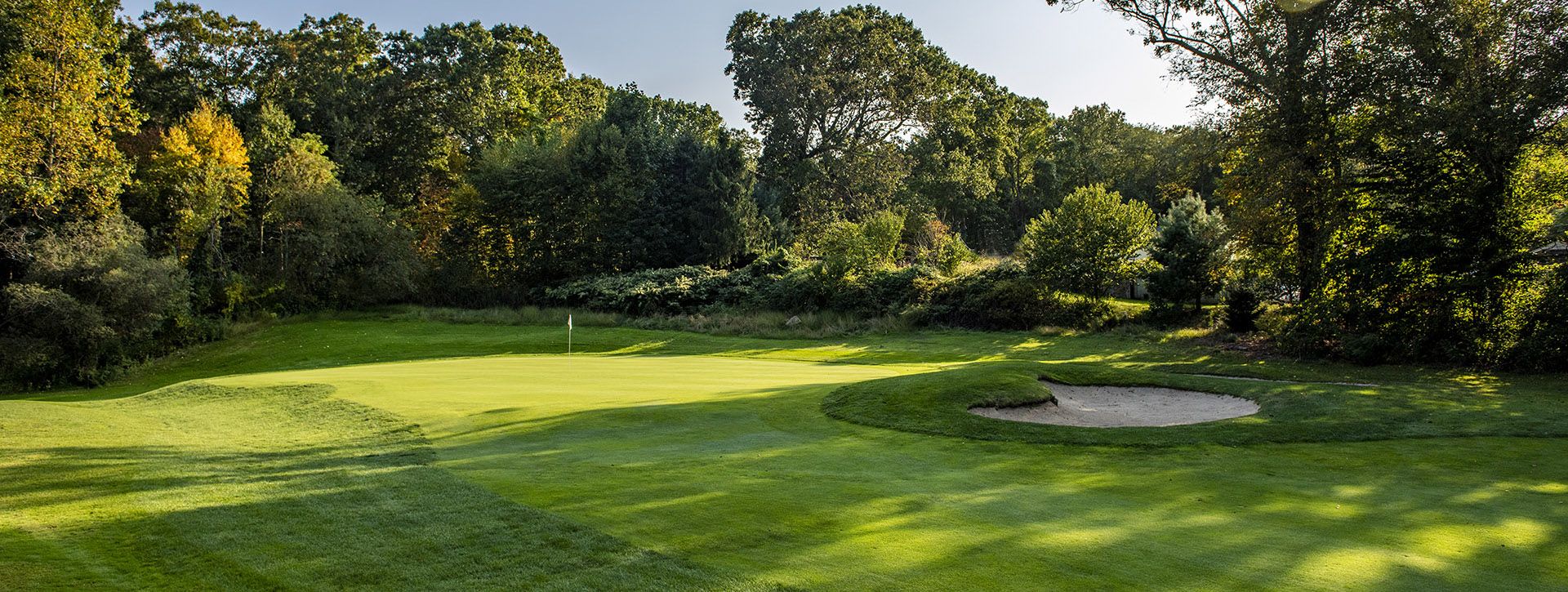A Meadow's Beginnings
A common question about meadows is, "Don't you just let the weeds and grass grow?"
Turns out it's a bit more involved. We found out for ourselves on Friday, September 25, 2020, when the Oak Hills Park Nature Advisory Committee (OHPNAC) and volunteers stuck shovels into the Great Lawn and discovered the land where the new meadow will go is a former dump!

Here is the Great Lawn in 2015 before initial clearing and establishment of the gravel walking path.

We planted donated Milkweed, Goldenrod, Butterfly Weed, and Rubeckia (Black-Eyed Susan), among other natives.
To establish a meadow, we'll need to plant perennial native wildflowers by seed and "plugs" (small seedling plants), ultimately crowding out the lawn grass, a process that can take between 2-5 years. The property we are restoring is approx. 1/4-acre in size.
At Oak Hills Park, we've taken a first step towards establishing a meadow in our nature area's Great Lawn. The walking path which makes an oval circuit in the Great Lawn will meander through a meadow in the years to come.
OHPNAC chair Audrey Cozzarin cut the ribbon to symbolically begin our work to create a bed of native plants by members Elsa Obuchowski, Andrea Malise, Larry Schwartz, and Mark Gartner, joined by volunteers Lisa Thomas of Wilton and John Loprinzo of Norwalk. Many thanks for everyone's hard work chipping through concrete, and unearthing rusted metal fence posts, glass, and bricks. A row of hedges to attract bees was planted along the edge of the walking area near the woods.

OHPNAC ribbon-cutting before the first native plant bed is created.
Our goal is to restore this property with native wildflowers, grasses, and shrubs which will benefit the pollinators we need to keep our environment healthy: Bees, butterflies, birds, and insects in our region. Pollinators worldwide are endangered, so this kind of meadow-creation is gaining popularity here and around the country. Providing food and shelter for these small creatures is important.

Larry and John plant the bee-loving hedges near the woodlands area.
We also thank several informal consultants for current practices in establishing meadows: Owen Wormser who is the author of the 2020 book, "Lawns Into Meadows: Growing a Regenerative Landscape"; Sally Nacker at Norwalk Library who hosts along with Louise Washer and others at the Norwalk River Watershed Assoc., a wonderful and informative lecture series on native gardening (via Zoom); and Nancy McClelland, the Norwalk master gardener in charge of the pollinator gardens at Oyster Shell Park in Norwalk. Oyster Shell Park is a former landfill, so we are kin!

A former dumping-ground, the property has construction material buried, such as this concrete.
We'll post updates as this meadow grows and thrives. We'll need volunteers and funding, so stay tuned! If you wish to help in any way to support this restoration and meadow, contact OHPNAC chair Audrey Cozzarin at 203-838-3332 or This email address is being protected from spambots. You need JavaScript enabled to view it..

Andrea and Lisa watering the plantlings as we finished up for the day.
A big thanks to the Oak Hills Park Authority for their interest and support for nature in the Park, and to Jim Schell the grounds supervisor and his crew for input and assistance going forward. It takes a village and the results will be beautiful.

